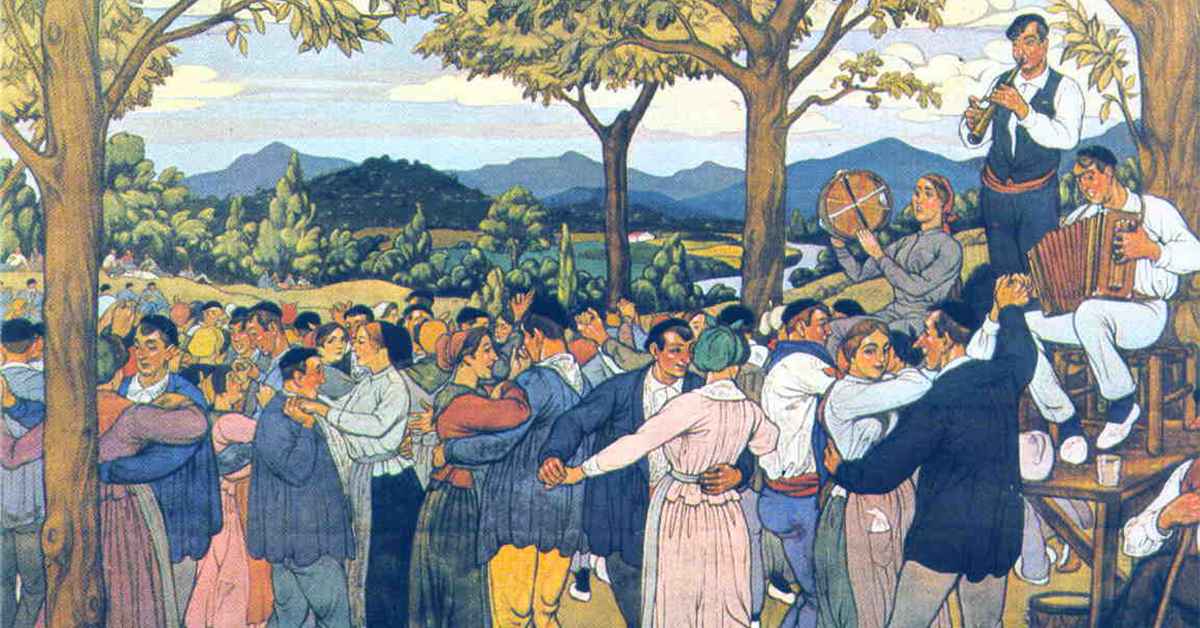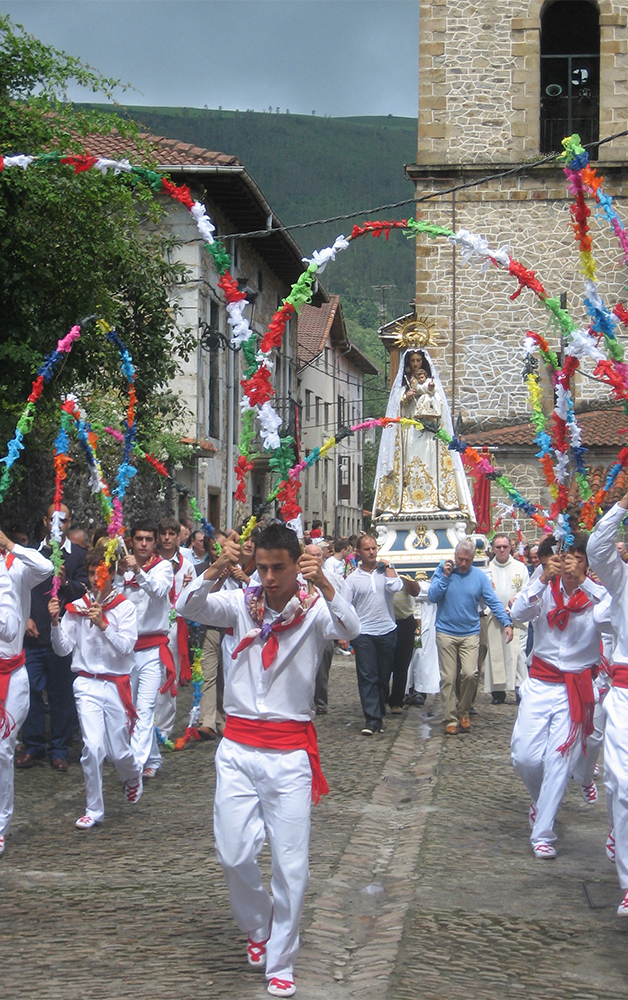Basque ethnography at a glance
The annual festive cycle is known to comprise solar celebrations of fixed date and festivities of variable character (ruled by the full moon of Easter Sunday). We might likewise distinguish between major feasts (St John, Corpus Christi, patron saints’ days…), or commemorations of generic origin and great importance in the diverse Christian liturgies, and minor feasts, punctual observances, or popular local devotions (saints’ days, Marian apparitions, miracles, rogations…), observed in neighbourhoods, parishes and peripheral places of worship.
In this context, traditional patron saint festivities concentrate in the summer season (symbol of a time of prosperity and abundance), rather than throughout the year, beginning with the feast of St John (24 June) and ending immediately after St Michael’s festival (29 September). The social structuring of the community and its organized interactions being reflected in them all, they are usually governed by a common and fairly deep-rooted scheme which we shall now try to unravel.
On the previous dates or eve, the organizers (associated youth, or either city, town or village councils) scheduled events, contracting and expenses. Musicians were welcomed and taken good care of, logistics worked out, and festive elements arranged (decorations, food and drink, collection of viands, lighting, last rehearsals, visits…). The ringing of bells, the first musical chords, the sound of gunpowder or the various religious services signalled that festivities were underway. On occasion, musical rounds would be held, public dances organized, celetratory symbols displayed and the very last details finalized on the run-up to the festival.
The main festive day of the patron saint festivities began with an early mass destined to the women in charge of family meals (housewives and maids). Mass was attended by municipal and religious authorities, notables, residents and visitors, all in their best clothes. Then, presided by the municipal corporation, a series of structured ritual dances or formal social dances were performed at the square, and playful or cheerful complementary acts followed. Everybody retreated to enjoy a generous meal with family and guests later. After lunch, musicians made a final round, playing their tunes in exchange for refreshments and the odd coin. In the afternoon, after the religious service, the longed-for public dance commenced, a golden opportunity for young girls and lads to establish closer relationships and for adults to exercise social control. Dances ended at dusk or at the sound of bell-ringing for evening prayers, and folks returned home. Night-time festive activity was rare, except for youth rounds or special rituals.
The second day of festivities would be similar to the big day. Married folks (taking the initiative at social dances, banquets, processions, get-togethers…) became the true protagonists. Alternatively, high mass was celebrated in remembrance of the dead, and alms offered for their souls. Most noteworthy is that, in some locations, this day was known by the diminutive denomination of the patronage (Antontxu, Roketxu, Lontxo…), or as day of the married or of the souls, accordingly, elsewhere. The octave or repetition of the feast used to be held the following weekend, though with less pomp and solemnity.
As might be perceived, many festive components have over time been stratified around local festivals or modified, and others have even disappeared. In point of fact, the dynamics of patron saint festivities are the driving force and vital principle in the adaptation of feastful events to the surrounding reality of the moment or the taste of their protagonists.
Josu Larrinaga Zugadi – Sociologist
Translated by Jaione Bilbao – Ethnography Department – Labayru Fundazioa



